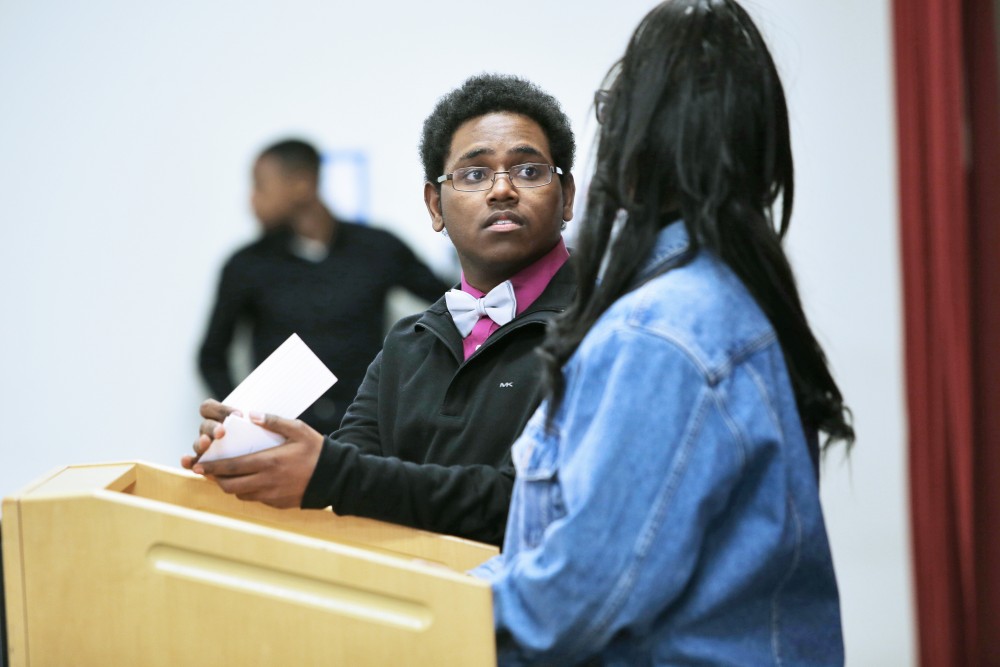Starting the conversation

GVL/Kevin Sielaff Day’Shawn Boyland
Feb 26, 2015
The Grand Valley State University chapter of the NAACP met on Monday to discuss the repercussions of the Black Lives Matter movement and the importance of communication.
Jonathan McKinney, regional field organizer for the National Association for the Advancement of Colored People, said he does not think there is enough discussion. The Black Lives Matter movement is popular, but it needs to continue to expand.
The most important thing one can do right now is communicate, McKinney added. Without a line of communication, the idea of the movement will get lost.
“Because there’s only one way we realize that people matter, and that’s to touch people and have people touch us,” McKinney said.
With this communication, various groups can gain an understanding of the multiple points of views that exist, which can help create some change.
McKinney praised Monday’s NAACP meeting, where students watched videos and discussed how those videos applied to their lives and the general Black Lives Matter movement.
One of the video clips came from World Star Hip Hop. It featured an African-American father who does not let his children wear hoodies or dark clothes. GVSU students at the NAACP meeting questioned his decision to restrict what his children wear.
Martel Green, a sophomore, said prohibiting what his children can wear is not going to solve the problem.
“It’s like this is a brand new thing, and the hoodie was just the secret formula in the equation that made everything go mad,” Green said. “That was just one story sensationalized by the media, but there’s plenty that happen every year.”
This protection also does not prepare children for the real world. Green said that once kids leave the care of their parents, they could change their lifestyle however they want. Sheltering them will not help prevent that.
McKinney said when black men and women leave their homes, they are often tested or judged. Members of the young black community might not experience being a minority until they attend college.
“It’s hard to have that experience once you get into the workforce,” McKinney said. “By that time, you’re trying to prove that you are not an Atlanta housewife.”
The video and discussion that ensued prompted a debate on attending historically black colleges and universities (HBCUs).
Antonio Bailey, secretary of the GVSU NAACP, said he sometimes wished he attended an HBCU. This would allow him to have a comfort zone, but he also likes the challenges that come from attending a school like GVSU.
“I like being at a predominantly white institution because I get to set the standard, and I get to pave the way for the rest of the African American students that will come through here,” Bailey said.
He said appearance is key when it comes to assumptions, but it also has to deal with behavior. Others may see someone negatively because of the way they dress or act, but this can just create a false assumption.
McKinney encouraged students to join the NAACP, but also look for other ways they can create change.
“Don’t take the responsibility of making sure you vote – that’s easy,” McKinney said. “What about your mother? What about your daddy? What about your neighbors? We have to take responsibility for the people around us.”

























